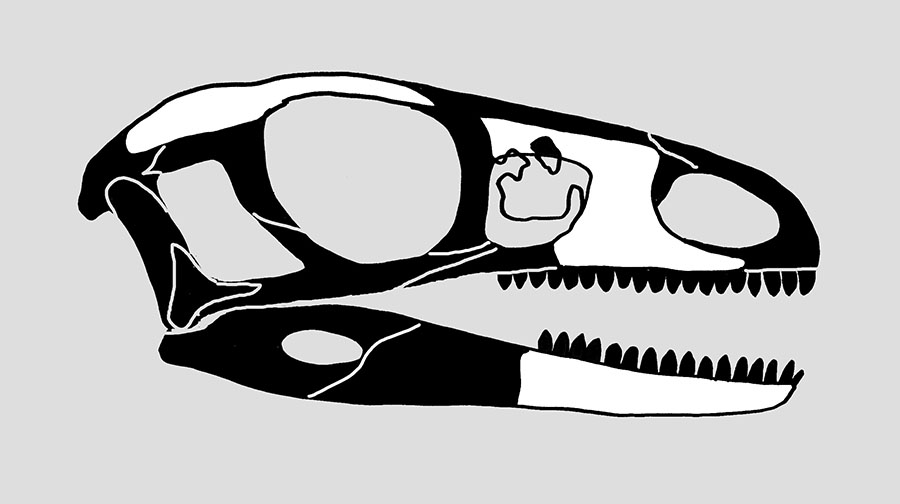
Species: tupiniquim LANGER, ABDALA, RICHTER & BENTON, 1999
Etymology: Tupiniquim, Portuguese word of indigenous-Guarani-origin, an endearing
way of referring to native things of Brazil.
Holotype: Museu de Ciencias e Technologia, Pontificia Universidade Catolica do Rio Grande do Sul, Porto Alegre, Brazil, MCP 3844-PV
Locality: Waldsanga (or Cerro da Alemoa), a private piece of land no. 1945, on BR-509 road, on the outskirts of the city of Santa Maria, 53°45’W, 29°40’S, Rio Grande do Sul State, Brazil.
Horizon: Red mudstone of the Alemoa Member, Santa Maria Formation.
Biostratigraphy:
Age: Carnian Stage, Lower Late Triassic Epoch, Late Triassic.
Material: A well-preserved semi-articulated skeleton, most of the presacral vertebral series, both sides of the pectoral girdle, right humerus, partial right ulna, both sides of the pelvic girdle with the sacral series, left femur and most of the right hind limb.

Saturnalia tupiniquim (modified from LANGER, et al., 1999), Holotype: MCP 3844-PV.
Parayptes:
MCP 3845-PV: Skeleton including the natural cast of a mandibular ramus bearing teeth, partial left maxilla, both frontals, parietals, lacrimals, postorbitals, an left dentaries, left quadrate an dprefrontal, apartf from the braincase, some disarticulated trunk vertebrae, both sides of the pectoral girdle, right humerus, right side of the pelvic girdle and most of the right hind limb.
MCP 3846-PV: An incompletely prepared skeleton, from which a partial tibia
and foot, as well as some trunk vertebrae, are known.